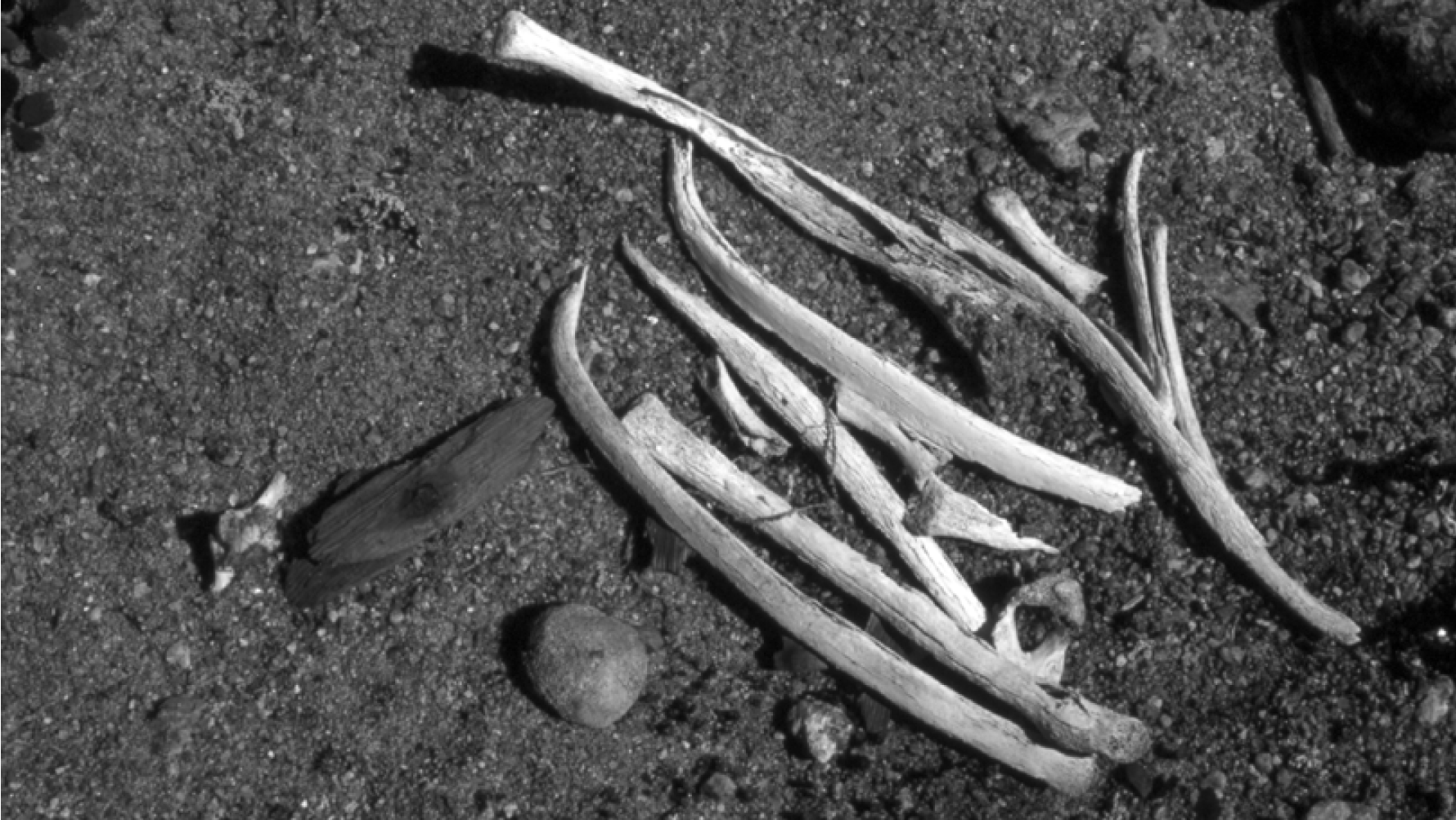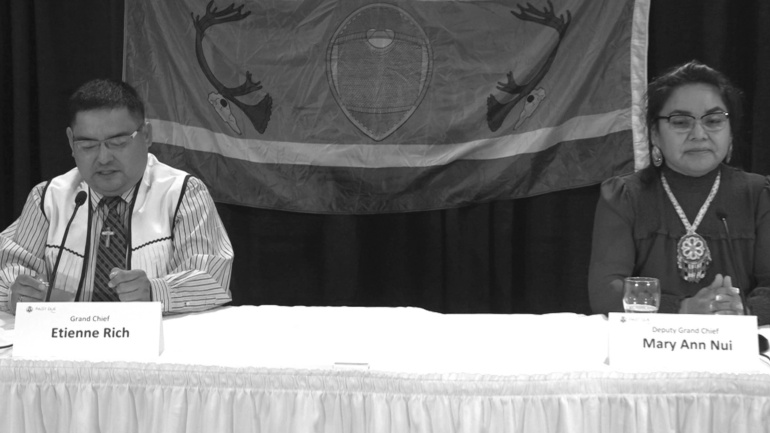THE INNU NATION OF LABRADOR
The Innu are the Indigenous inhabitants of an area in Canada they refer to as Nitassinan (“Our Land”), which comprises much of Labrador and some eastern portions of the province of Québec. Their ancestors have lived on these lands for several thousands of years. The Innu Nation is the governing body that that formally represents the Innu of Labrador: approximately 3,200 people, most of whom live in the two Innu communities of Sheshatshiu and Natuashish.
THE CHURCHILL FALLS PROJECT
The Churchill Falls hydro-electric project consists of the Churchill Falls Generating Station (CFGS), the Smallwood Reservoir, the Ossokamanuan Reservoir, dikes and other control structures on the upper Churchill River, power lines to transport the electricity from the CFGS into Québec, and other associated infrastructure. The CFGS is a hydroelectric underground power station located in Labrador. With a capacity of 5,428 MW, it is the second-largest generating station in Canada, after the Robert-Bourassa generating station in northwestern Québec. The station cost over six and half billion in 2020 Canadian dollars to build. Commissioned from 1971 to 1974, it is owned and operated by the Churchill Falls (Labrador) Corporation Limited, CFLCo, owned by Nalcor Energy and Hydro-Québec. The damming of the upper Churchill River to create the Smallwood Reservoir flooded over 6,500 square kilometers of Innu land in Labrador, including valuable caribou habitat, cultural gathering places, travel routes, and Innu burial grounds. It is the fifth largest reservoir in the world – larger in area than Prince Edward Island.
HYDRO-QUÉBEC’S ROLE AND PROFITS
Hydro-Québec guaranteed the construction cost overruns for the Churchill Falls project. It assumed risks associated with the project when in 1969 it guaranteed that it would buy almost all the electricity produced by the project for many decades to come, whether it needed it or not. Hydro-Québec provided a crucial completion guarantee to secure the financing needed to construct the project. It ensured that the facility was built to its technical requirements so that it would seamlessly integrate into its own grid. And, significantly, Hydro-Québec built a transmission network in Québec to receive the electricity at the Québec – Labrador border and transmit the electricity to markets in the United States. Without Hydro-Québec, the Churchill Falls Project would not have been built.
It is estimated that Hydro-Québec has already made up to $80 billion in profits from the Churchill Falls Generating Station – and stands to make up to $150 billion by the end of the Power Contract, in 2041.
STATEMENTS BY INNU PEOPLE ABOUT THE CHURCHILL FALLS PROJECT
“Our hunting territory is no good to us anymore, because all our traps and belongings are under water. We lost mostly Indian-made items. I lost two canoes, about 300 traps, snowshoes, caribou-hide scrapers, beaming tools, ice chisels, axes, and many other items. We knew that there was going to be damming of the (Churchill) river, but we did not know what it would mean. We had no idea of what the level of the water would be. At most, we compared it to a beaver damming a river — Indians were not consulted at all of what was going to happen. I was very bitter after I found out that the lands were flooded. There wasn’t much that could be done.”
PENOTE ASHINI, 1981
I guess the government dammed the great river because money could be made selling power and jobs were created. But governments don’t live off the land, so they are not hurt. On the other hand, we have been deeply hurt to see our land destroyed, land which has sustained us for thousands of years. The government acted like they were the owners of the land. This is Innu land. They are stealing land that belongs to the Innu.
ELIZABETH PENASHUE (TSHAUKUESH), 1991
“But before it was disturbed, before Meshikamau was flooded, trout used to be everywhere, right, in the brooks. I saw Innu at Kanekuanekat, and the lake was not disturbed yet, who caught very huge trout there. And now there’s no knowledge that any trout is there. And the fish is not good at all, right. It does not taste like anything, the fish. The water is doing that to it. It does not even taste like fish. It does not taste like anything. That’s because the water is bad. The water is dead.”
PIEN GREGOIRE (JR), 1993
“In 1975 without any warning to Innu families, the Churchill Falls Hydro-electric project flooded much of the Lake Michikamau region, drowning major Innu travel routes, open-water camp-sites and burial grounds as well as important caribou travel routes and waterfowl nesting areas. The Lake Michikamau region had long been an important rendezvous place where Innu families gathered to renew social and spiritual bonds. Without warning Innu families lost cached equipment and access to a place that had great significance for Innu families. I often heard Innu elders speak with great sadness about the loss of the Michikamau camps and wondered how much of Innu history lay buried beneath the Smallwood reservoir waters. My own grandfather lost his canoes, his tent, and all his trapping equipment and he spoke sadly of the old burial places that he knew were now under water.

In 1995, following several years of low snow accumulation, the water-levels at the reservoir had been drawn down to the old lake level once again exposing the shorelines and the old Innu camping places. I was curious if any traces of the old places survived. Accompanied by my uncle, I had the opportunity to lead a team of archaeologists to see if any traces of Innu history could be found. In no time at all we found traces of many Innu camps from the historic period as well as several that included stone tools left by Innu hunters and their families many hundreds if not thousands of years ago. At one place on a knoll over-looking the lake, that had long been an old Innu burial place, we found where the reservoir waters had destroyed the ancient resting place, where a burial of a young Innu had been eroded away. Gathering the bone fragments and the skull we reburied them back in the forest safe from the erosion caused by the reservoir’s high waters.”
DANIEL ASHINI, FORMER GRAND CHIEF OF INNU NATION, 2007
UNITED NATIONS DECLARATION ON THE RIGHTS OF INDIGENOUS PEOPLES
The United Nations Declaration on the Rights of Indigenous Peoples (UNDRIP) was adopted on September 13, 2007. It is the most comprehensive international instrument on the rights of indigenous peoples. It establishes a universal framework of minimum standards for the survival, dignity, and well-being of the indigenous peoples of the world and it elaborates on existing human rights standards and fundamental freedoms as they apply to the specific situation of indigenous peoples. Below are some pertinent articles from the UNDRIP.
- “States shall provide effective mechanisms for prevention of, and redress for … [a]ny action which has the aim or effect of dispossessing [Indigenous peoples] of their lands, territories or resources.”
- “States shall consult and cooperate in good faith with the indigenous peoples concerned through their own representative institutions in order to obtain their free, prior and informed consent before adopting and implementing legislative or administrative measures that may affect them.”
- “Indigenous peoples have the right to own, use, develop and control the lands, territories and resources that they possess by reason of traditional ownership or other traditional occupation or use, as well as those which they have otherwise acquired. States shall give legal recognition and protection to these lands, territories and resources.”
- “States shall undertake effective consultations with the indigenous peoples concerned, through appropriate procedures and in particular through their representative institutions, prior to using their lands or territories for military activities.”
- “States shall consult and cooperate in good faith with the indigenous peoples concerned through their own representative institutions in order to obtain their free and informed consent prior to the approval of any project affecting their lands or territories and other resources, particularly in connection with the development, utilization or exploitation of mineral, water or other resources. States shall provide effective mechanisms for just and fair redress for any such activities, and appropriate measures shall be taken to mitigate adverse environmental, economic, social, cultural or spiritual impacts.”




